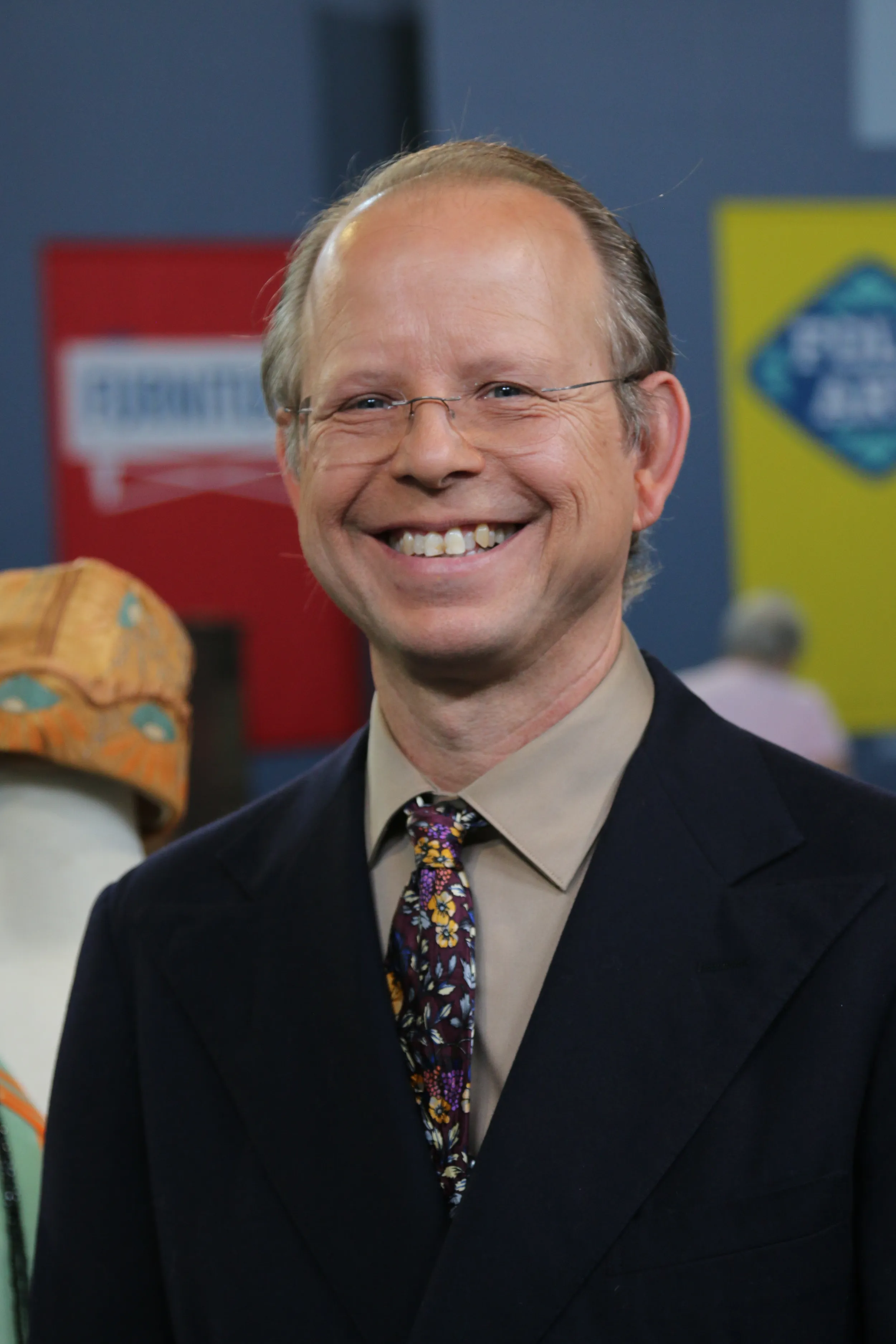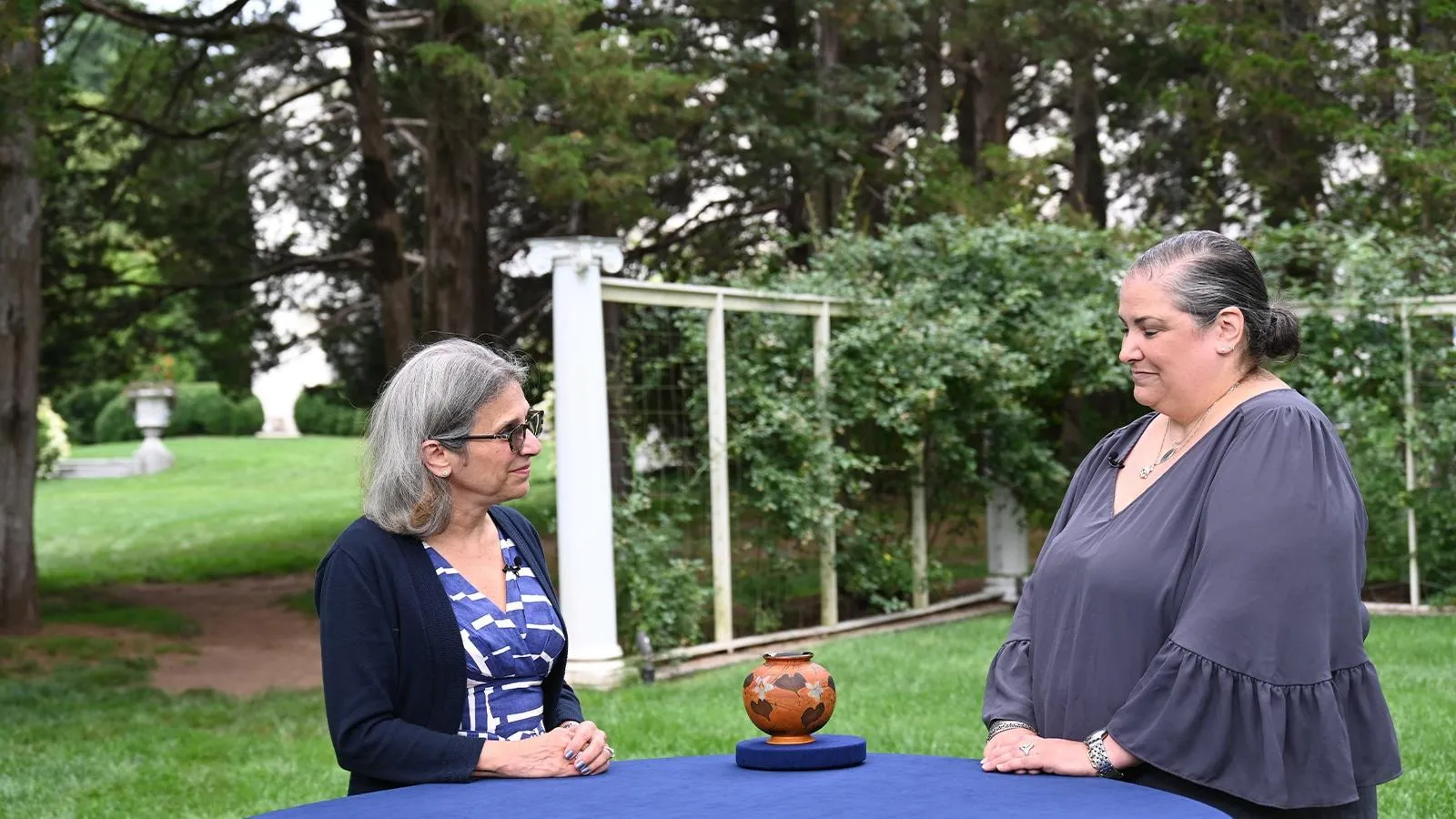GUEST: My wife and I, we were uh at an estate sale. It was a Saturday and Sunday, we purchased a couple of items, and we went back on Sunday, because it was just, had a lot of unique stuff. We were leaving, actually, and my wife said, "Oh, we didn't look in the garage." And I was, like, "Eh, you know, let's go," or whatever. She goes, "No way, let's look around." So she, there was a box on the ground, and she opened it up, and we thought it was curtains. But she loved the fabric, and so we went in and asked about it, and they said, "Oh, no, that's a gown." We paid $75 for it and that's all we could pretty much find out about it.
APPRAISER: It's an amazing piece. There is no label inside, so we don't know who the maker was. The dress was actually created in the 1880s. It's a beautiful dress, it's got all kinds of unusual details. It's in the feather design. In the 1880s, these types of motifs were popular not only in women's clothing, but in drapery fabrics and other fabrics that they used. The base underskirt is a pink silk. It's so beautiful because it has several different elements that are more unique. Like, it has the pink pearls mixed with ivory pearls.
GUEST: Mm-hmm.
APPRAISER: And this is a machine-made appliquè. On the right side, you have fabric that is machine-embroidered, as well, but it is a lace. And if you look, there are many different colors. There's yellows and burgundies.
GUEST: Mm-hmm.
APPRAISER: There's kind of a pale aqua and pinks. It is all laid over the pink silk. So from a distance, you get a soft pink coming through the lace.
GUEST: Mm-hmm.
APPRAISER: The lace at the neckline is all handmade lace. If you look, it has the handmade lace at the cuffs...
GUEST: Mm-hmm.
APPRAISER: ...and more of the pearl detail. It's really beautiful. It's, the entire dress is lined in a pink silk that matches the front of the dress. And it's also piped at the waistband, you can see as it comes around.
GUEST: Mm-hmm.
APPRAISER: This is a two-piece dress. And so the bodice and the train is one piece. This overskirt and the other is a, a complete skirt under that.
GUEST: Mm-hmm.
APPRAISER: As it would move, the color, the pink color, would actually be exposed on the underside of the skirt...
GUEST: Mm-hmm.
APPRAISER: ...in several different positions because of the way the skirt is created.
GUEST: Wow.
APPRAISER: So with the neckline, it was either made for a ballgown or for the opera. This dress was worn by a lady who wanted to be seen. It has built-in bustles, which has, from both the skirt itself-- they have ties that you tie the bustle in.
GUEST: Wow.
APPRAISER: And in the 1880s-- this is probably about 1884, 1885-- the bustle beca… started to get larger and larger. And then, by the early 1890s, it started getting smaller again. During the last two years, the prices of Victorian clothing has begun to escalate in price. I would think, at the right auction, that this gown would sell between $2,500 and $4,000.
GUEST: Wow. Very interesting, that's awesome.



